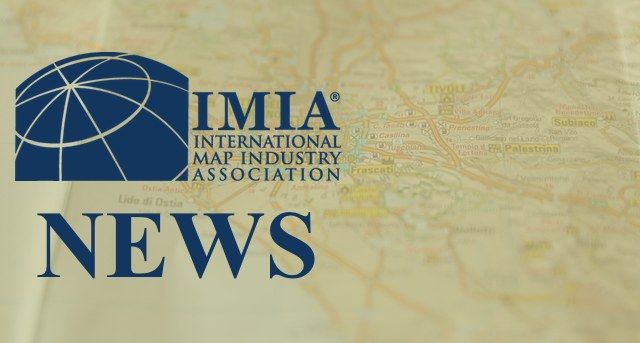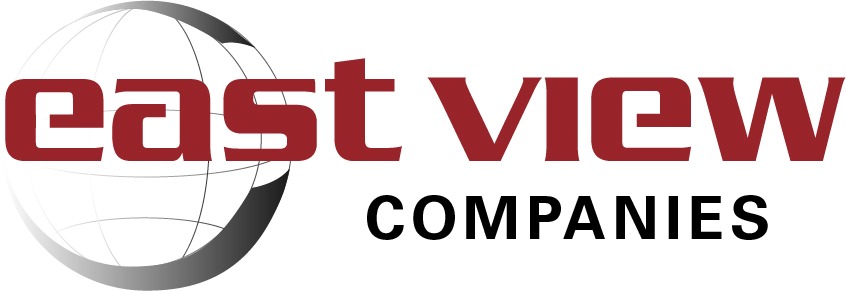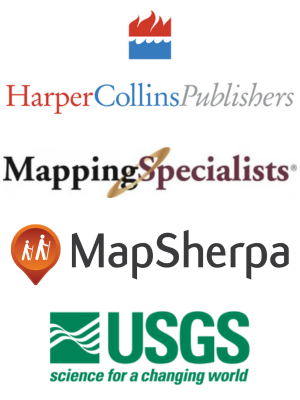New and innovative technologies have an important impact into what cartographers are doing.
In the geospatial domains we can witness, that more spatial data than ever is produced currently. Numerous sensors of all kinds are available, measuring values, storing them in databases which are linked to other databases being embedded in whole spatial data infrastructures, following standards and accepted rules. We can witness also that we are not short of ever more new modern technologies for all parts of the spatial data handling processes, including data acquisition (e.g. UAVs currently), data modelling (e.g. service oriented architectures, cloud computing), data visualisation and dissemination (e.g. Location-based Services, augmented reality). So, where are we now with all those brave new developments?
Obviously we are not short of data in many ways. Clearly we can state, that it is rather the opposite. The problem is often not that we don’t have enough data but rather too many. We need to make more and more efforts, to deal with all those data in an efficient sense, mining the relevant information and link and select the appropriate information for a particular scenario. This phenomenon is being described as “big data”. Often application developments start there. Because we have access to data, we make something with them. We link them, we analyse them, we produce applications out of them. I call this a data-driven approach.
We are also not short of technologies. It is rather the opposite, while just being able to fully employ the potential of a particular data acquisition, modelling or dissemination technology new technologies come in and need to be considered. New technologies become available quicker and quicker and need to be evaluated, addressed and applied. Often application development starts there. Because we have a new technology available, we make something with it. I call this a technology-driven approach.
However, the particular need, demand, question or problem of a human user is often taken into account only when the data-driven or technology-driven application, product or system has been built. Often this causes problems or leads to products, systems and applications which are not accepted, not efficient or simply not usable. By starting from the question what are the demands, questions, problems or needs of human users in respect to location we could eventually apply data and technology in a sense, that they serve such user-centred approaches rather than determine the use.
But how can we unleash the big potential of geo information in such truly interdisciplinary approaches better? How can we make sure, that spatial data is really applicable for governments, for decision makers, for planners, for citizens through applications, products, systems which are not forcing them to adapt to the system but are easy-to-use and efficiently support the human user?
In this respect maps and cartography play a key role. Maps are most efficient in enabling human users to understand complex situations. Maps can be understood as tools to order information by their spatial context. Maps can be seen as the perfect interface between a human user and all those big data and thus enable human users to answer location-related questions, to support spatial behaviour, to enable spatial problem solving or simply to be able to become aware of space.
Today maps can be created and used by any individual stocked with just modest computing skills from virtually any location on Earth and for almost any purpose. In this new mapmaking paradigm users are often present at the location of interest and produce maps that address needs that arise instantaneously. Cartographic data may be digitally and wirelessly delivered in finalized form to the device in the hands of the user or he may derive the requested visualization from downloaded data in situ. Rapid advances in technologies have enabled this revolution in map making by the millions. One such prominent advance includes the possibility to derive maps very quickly immediately after the data has been acquired by accessing and disseminating maps through the internet. Real-time data handling and visualization are other significant developments as well as location-based services, mobile cartography, augmented reality.
While the above advances have enabled significant progress on the design and implementation of new ways of map production over the past decade, many cartographic principles remain unchanged; the most important one being that maps are an abstraction of reality. Visualization of selected information means that some features present in reality are depicted more prominently than others while many features might not even be depicted at all. Abstracting reality makes a map powerful, as it helps to understand and interpret very complex situations very efficiently.
Abstraction is essential
Disaster management can be used as an example to illustrate the importance and power of abstract cartographic depictions. In the recovery phase quick production of imagery of the affected area is required using depictions which allow the emergency teams to understand the situation on ground from a glance at the maps. Important on-going developments supporting the rescue work in the recovery phase are map derivation technologies, crowd sourcing and neo-cartography techniques and location-based services. The role of cartography in the protection phase of the disaster management cycle has always been crucial. In this phase risk maps are produced which enable governors, decision makers, experts and the general public alike to understand the kind and levels of risk present in the near and distant surroundings. Modern cartography enables the general public to participate in the modelling and visualizing of the risks their neighbourhood may suffer from on a voluntary basis. Modern cartography also helps to quickly disseminate crucial information.
In this sense cartography is most relevant. Without maps we would be “spatially blind”. Knowledge about spatial relations and location of objects are most important to learn about space, to act in space, to be aware of what is where and what is around us or simply to be able to make good decisions. Cartography is also most contemporary, as new and innovative technologies have an important impact into what cartographers are doing. Maps can be derived automatically from geodata acquisition methods such as laser scanning, remote sensing or sensor networks. Smart models of geodata can be built allowing in-depth analysis of structures and patterns. A whole range of presentation forms are available nowadays, from maps on mobile phones all the way to geoinformation presented as Augmented Reality presentations.
Where are we heading to?
What we can expect in the near future is, that information is available anytime and anywhere. In its provision and delivery it is tailored to the user’s context and needs. In this the context is a key selector for which and how information is provided. Cartographic Services will thus be wide spread and of daily-use in a truly ubiquitous manner. Persons would feel spatially blind without using their map based services, which enable them to see who or what is near them, get supported and do searches based on the current location, collect data on site accurately and timely. Modern Cartography applications are already demonstrating their huge potential and change how we work, how we live and how we interact.
In that sense the role of the map has changed. Maps used to be artefacts, they had to look beautiful, well-designed, they had to store information for a long time because it needed to be used over a long period of time. In modern cartography there is an increasing number of functions to a map. Besides its old function of an artefact, a modern map is also an interface that gives human users access to information stored in the map and beyond the map in databases. The map has therefore the function of a table, structuring information through spatial attributes. And if a modern map is such an interface, giving access to structured information, then the concept of modern cartography in one sentence would be ‘efficient communication of geospatial information’.
What is changing is then how maps are derived and produced. We can summarize the characteristics of modern maps as follows:
- Real time: The world is permanently changing. To depict, communicate and display the world means to depict, communicate and display what is there right now, thus to find ways to shorten the time between data acquisition and data representation through maps. This is already true in real-time maps and rapid mapping approaches.
- Ubiquitous: The accessibility and availability of maps need to be considered in an ubiquitous context, thus maps must be accessible and available anytime and anywhere.
- Media-adequate: Maps are to be displayed and disseminated through various media. This can include paper, screens of all kind of formats, resolutions and sizes, or multimedia environments. This might also include in future smart watches, wearable devices, augmented reality devices etc. Whatever medium is used, the map needs to be tailored particular for this medium to fit its needs and constraints.
- Personalized: Map are interfaces between geoinformation and human users, thus a mean of communication. From human communication we can learn, that we usually adapt what and now we communicate to our communication partner. Modern maps will do the same, thus being adaptive, reactive and anticipative on the context, the user and the use.
- Well designed: Whatever map is used in whatever context on whatever medium for whatever reason there is a dogmatic attribute which has to be followed always when using maps: A map has to be readable! This simply means that is has to be visually perceivable. And this means that we need to avoid graphical conflicts. And we can do even more: we can not only make it readable but design it in a way, that it is pleasing to the eye, thus do more then conveying information.
The successful development of modern cartography as the discipline dealing with the development of such modern maps requires integrated interdisciplinary approaches from such domains as computer science, communication science, human-computer interaction, telecommunication sciences, cognitive sciences, law, economics, geospatial information management and cartography. It is those interdisciplinary approaches which make sure that we work towards human-centred application developments by applying innovative engineering methods and tools in a highly volatile technological framework. A number of important technology-driven trends have a major impact on what and how we create, access and use maps, creating previously unimaginable amounts of location-referenced information and thus put cartographic services in the centre of the focus of research and development.
To summarize
Modern Cartography is key to human mankind. Without maps we would be “spatially blind”. Knowledge about spatial relations and location of objects are most important for enabling economic development, for managing and administering land, for handling disasters and crisis situations or simply to be able to make decision on a personal scale on where and how to go to a particular place.
New and innovative technologies have an important impact into what cartographers are doing. Maps can be derived automatically from geodata acquisition methods such as laser scanning, remote sensing or sensor networks. Smart models of geodata can be built allowing in-depth analysis of structures and patterns. A whole range of presentation forms is available nowadays, from maps on mobile phones all the way to geoinformation presented as Augmented Reality presentations.
Maps and other cartographic products are attractive. Many people like to use maps, to play around with maps for instance in the Internet or simply want to look at them. We can witness a dramatic increase in the number of users and use of maps currently.
Prof Dr Georg Gartner
Research Group Cartography, Department of Geodesy and Geoinformation
Vienna University of Technology, Vienna, Austria
Past President International Cartographic Association










